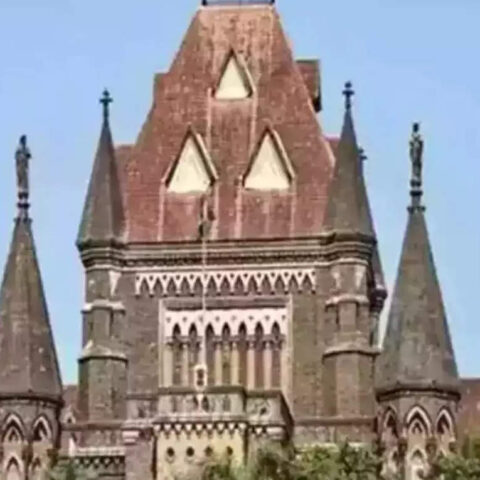
NEW DELHI: Sujeeta thought she had left all woes behind two years ago when she moved into a new flat on Tower A at Kalkaji. “Imagine being a mother of three kids and living on the seventh floor. Every single day for two years, I have had to haul the children all the way down with me to the ground floor to fill a bucket from the RO outlet because there’s no drinking water supply in our flats or anywhere else,” muttered the 30-year-old. “8am every morning is a full-scale battle for water. No matter how early you get there, you’re left with dust in your bucket if you’re not quick enough.”In 2022, an optimistic Sujeeta and many of her neighbours in Bhoomiheen Camp slum cluster had gleefully unlocked the flats in Kalkaji Extension allotted to them as part of the in-situ slum rehabilitation scheme.
They all thought they had achieved their dream of owning a proper house. Indeed, they moved into a flat with a living room, bedroom, kitchen, toilet, bathroom and balcony. But in the time since then, Sujeeta and her friends have found respectable living and escape from the mess of jhuggi life that they had envisioned evading them.
In fact, Hewanti, Sujeeta’s sister-in-law, isn’t too enthusiastic now about moving into one of the towers there. She hasn’t yet been allotted a flat but no longer envies Sujeeta. “We still live in a shack in the camp,” she told TOI. “Around a year ago, we poured our savings into fees for lawyers, hoping they’d secure us a flat. But seeing the conditions here, we now regret having spent so much on the middlemen. They promised us the world but, as you can see, delivered very little. Our old jhuggi is actually more spacious and we feel safer there too.”
The slum dwellers of Govindpuri had believed it would be a significant upgrade to move into the flats built by the Delhi Development Authority. But with so many problems, in fact with even the basic amenities missing, there is only nostalgia for the old shacks.
Even urban planners had been pleased when the complex was inaugurated on November 2, 2022. The in situ rehabilitation housing site is located on a 30-metre wide road along Govindpuri Main Road.
There are 3,024 economically weaker section flats configured in towers of ground+14 floors, with each flat measuring 25 sq metres. The aim was to erase slums and use the land as a resource to provide pucca housing to the people living in shanties. But the experience of two years would probably now convince such planners that the scheme has only succeeded in creating a vertical slum in place of a shanty town.
Not only is tapped water unavailable as promised, but garbage management has literally hit the pits. Residents have repeatedly attempted to establish a residents’ welfare association to coordinate waste collection and manage rag pickers, but these efforts have yet to succeed. In the meanwhile, trash continues to accumulate around the apartment buildings.
“Maintenance is not taken seriously here. The open sewers overflow with the slightest rain, moisture is causing chunks of the roof to fall off, sometimes on unsuspecting residents, and garbage dumps proliferate in every corner,” a resident grumbled. “It’s just as suffocating as in the slum, but with less room to breathe and more layers of frustration.”
Flat occupants were also promised piped gas, but with no pipelines installed, they are stuck with exorbitant LPG cylinder costs – 800 every three weeks, plus 50 as delivery charges. For those who can’t navigate the booking system, dealing with middlemen means paying even more.
The modern amenities that could facilitate a decent lifestyle are not the only things missing in the concrete complex. Lalita, a 30-year-old nurse, reveals the stark reality of the ‘gated community’ she now calls home, “After late shifts at the hospital, I sometimes wish I was heading back to my old jhuggi,” she sighed. This so-called ‘secure’ society is anything but. After 11pm, it’s like a free-for-all. Goondas roam the streets, drug addicts intimidate women and children, and drunkards sometimes follow you right to your doorstep.”
Residents are increasingly alarmed by the spate of robberies in the locality. Many have installed heavy iron gates and pooled funds for CCTV cameras. Yet, the lack of public lighting only deepens their fear that their flats are just nocturnal obstacle courses for would-be burglars. There are no full-fledged security guards on duty nor entry logs to record the comings and the goings of people..
Most of all, the in-situ rehabilitation scheme was meant to improve the living conditions of slum dwellers without affecting their way of life. But the abrupt shift to vertical living in overcrowded buildings has been, for the occupants, an experience in the worst of modern urbanisation – poor room lighting and ventilation, substandard construction and inadequate facilities. The shift from low-rise, high-density homes to impersonal high-rise buildings has also disrupted social networks and has severed slum dwellers from their street-based livelihoods.
Parmeela, a 65-year-old domestic helper, spends her days tending to the grand bungalows of Kalkaji. By night, she returns to her flat on the first floor. Once a proud resident of the Govindpuri jhuggi-jhopri cluster for 30 years, Parmeela now finds her low altitude flat in B block the only blessing given her arthritis and the unreliable lifts in the towers.
“It’s as if an eerie silence has settled over these apartments. Back in the jhuggi, there was a real sense of community. If someone had an argument, tripped, or even just had a bad day, everyone spilled out of their homes to offer help. Now, we’re confined to our small rooms on different floors. It’s a world where no one knows what’s happening beyond their own door.”
Parmeela ran a pakora shop from her jhuggi in her earlier avatar. “I felt independent and empowered back then – people knew me, kids swung by after school to grab a bite as did labourers, while women came to chat. It was a thriving little ecosystem I managed on my own,” she reminisced. “Now, here I am, back to being someone’s domestic worker because I cannot afford the astronomical shop rates here and running a business from an apartment is simply impractical.”
This disruption in community life has come about perhaps because redevelopment schemes are increasingly being seen as focused on houses rather than on people and life.
Many activists point out how the eventual beneficiaries aren’t consulted prior to conceptualising the new complexes, another case in point being the in-situ project at Kathputli Colony that has put the colourful and vibrant community life of folk artisans into total disarray. In effect, the sole upwardly mobile aspect of such projects is the concrete towers.
Even then, there still are a few happy people. One of them is Tushar Vishwas, a 26-year-old tuition teacher. He has turned his new apartment into ‘Knowledge Classes’, a tuition centre, where the Delhi university history postgraduate continues teaching students like he did in Bhoomiheen Camp. But the rarity of occupants like him only underline the civic and social disorder that high-rise substitutes have caused.









